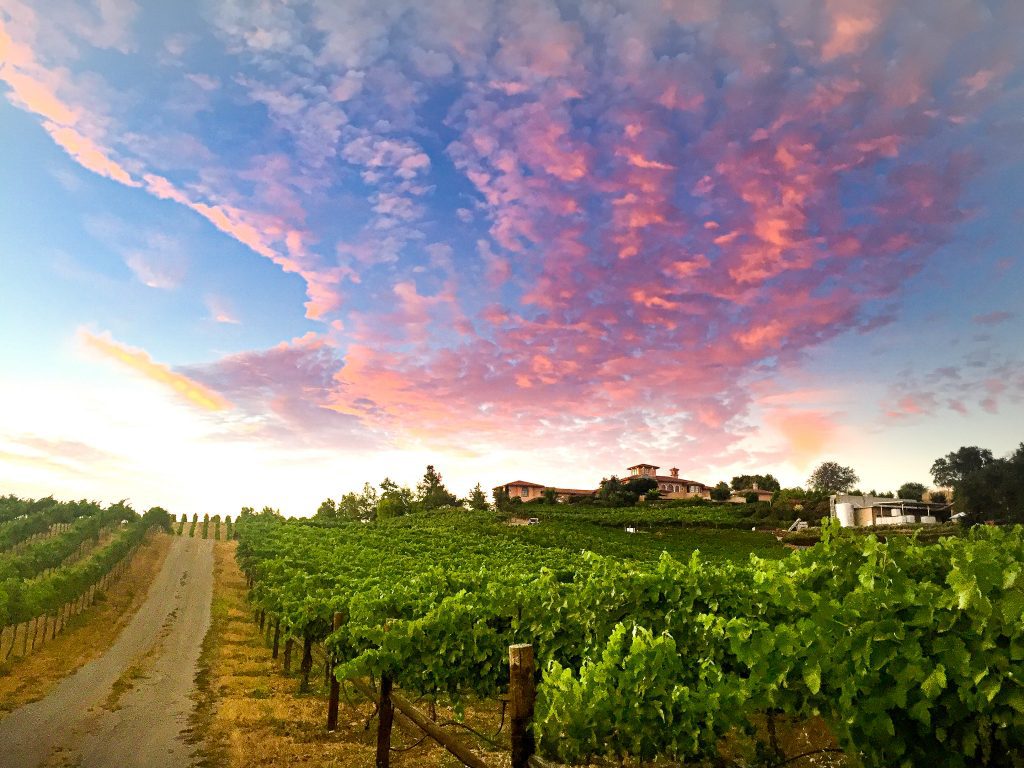
Sierra Foothills AVA Explained
Along the western stretch of the Sierra Nevada Mountains, running 120 miles from north to south is the oldest wine region in California: Sierra Foothills AVA. Covering 2.6 million acres and home to over 200 wineries near Sacramento CA, it’s also one of the largest wine regions in the United States. There is so much to explore here, including a uniquely American history, an ever-evolving present, and an exciting future to look to.
Are you ready to jump in? Whether you’re looking for the best restaurants in Lincoln or want to taste your way toward Lake Tahoe, here’s what you need to know about the Sierra Foothills AVA.
A Place You’ll Never Stop Discovering
The Sierra Foothills AVA covers a lot of ground—within it are endless microclimates, soil types, and winemakers whose visions reflect the land they work with. There are also unique features that the entire region shares, distinguishing it from the rest of California and beyond. The climate, geography, soil diversity, and commitment to sustainability that local vintners share make us who we are.
Big temperature swings
The climate here is Mediterranean, making it a good fit for early Italian settlers of the 19th century. Sunny days ripen the grapes, allowing them to develop their signature flavors. Just as important is what happens at night: alpine winds come down the mountainsides, cooling the grapes so that they don’t overripen, and maintaining bright acidity. This balance is what every winemaker looks for, and we have it here.
The mountain effect
Vineyards throughout the region are planted to rolling hills, steep slopes, and river valleys, all of which influence a different character in the wine. It’s the vintner’s job to understand deeply the effect that every shift in elevation and aspect has on the wine. From this knowledge, we pick which grapes to plant. As you explore wineries, you’ll find that each winemaker has a story that begins with their interpretation of the land.
Rainfall is more abundant here, allowing us to minimize our environmental impact through dry farming. But it also keeps our vines safer from fire and drought.
Well-draining soils
Vines love well-draining soils. Our main soils are decomposed granite, limestone, and at higher elevations, crushed volcanic rock. Well-draining soils allow the vines to grow deep into the earth, which makes them healthier, allowing them to make wines with character.
Over 200 Wineries Near Sacramento CA
Sierra Foothills AVA is easy to access from Sacramento with a never-ending range of wineries to visit. The region is also home to the Placer County Wine Trail, which leads east to Lake Tahoe. Many of the wineries along the trail are small, family-owned, and invested in sustainable winemaking practices.
The range of wine styles reflects the vast territory of the region. Elevations range from 500 feet above sea level to 6,000 feet, the wine changing as you go. Higher elevations offer cooler nights, which leads to bright, fresh wines, sparkling wines, rosé, and red wines with astounding depth.
Nutrient-poor soils of volcanic rock and decomposed granite might sound terrible, but is a dream come true for the old vines that this region is home to. The vines are forced to grow deeper into the earth in search of water and nutrients. Once they’ve grown, they have access to a steady water supply that allows them to sustain themselves.
Some of them will live longer than you!
The Gold Rush That Started It All
The history of the Sierra Foothills AVA is also the history of the Gold Rush. In 1848, the discovery of gold at Sutter’s Mill spread throughout the entire world, initiating one of the largest mass migrations in history. Thousands of people came to the ancestral home of the Sierra Miwok and Nisenan in search of gold, many from Southern Europe.
The miners were thirsty, and by the late 1880s, the area was home to 10,000 acres of vines and 100 producers. Most of the earliest settlers were Italian, and they brought Zinfandel, known as Primitivo in Italy, along with other varietals like Barbera and Syrah. Some of the oldest Zinfandel vines in the country have survived to this day, partly due to their remote location, and partly due to Prohibition-era loophole laws.
However, during Prohibition, winemaking in the Sierra Foothills all but ground to a halt. As the region has begun its process of replanting and reviving, Zinfandel remains a flagship grape. But a visit to the region will teach you that there are an incredible number of other grape varietals that make great wine here in the Foothills.
Zinfandel is famous for its jammy, fresh, and sometimes rich and savory character. Barbera, which was once known as a basic table wine, is now impressing the wine world with its capacity to achieve complexity, pepper, and tart cherry fruit. Sangiovese, also a well-loved Italian grape, is able to develop structure and depth of flavor in the Foothills. Floral Viognier, Grenache, Tempranillo, Cabernet Sauvignon, Petite Sirah, and distinctive Chardonnay are also made here.
Sustainability Matters Here
80% of California’s wine is certified sustainable, and in the Sierra Foothills, it’s commonplace to farm sustainably and organic, certified or not.
Thanks to our proximity to the mountains, we get enough rain that makes dry farming possible throughout the region—an option that others, in the face of drought, simply don’t have. Dry farming allows winemakers to harness rainwater alone to feed their vines, avoiding irrigation and reducing water use immensely.
Other sustainable practices are rooted in the idea that the vineyard is a living organism and that pests can be managed by gaining deep insight into how that ecosystem works, rather than eradicated with chemicals. Sustainable wine growing begins with energy and water use but extends to employment practices and community engagement.
Along The Placer County Wine Trail
The Sierra Foothills AVA is ever-evolving—there’s so much ground to cover and this is what makes it so exciting. Where should you start?
From the northern foothills, just 30 miles east of Sacramento, the Placer County Wine Trail brings wine lovers all the way to the eastern shore of Lake Tahoe. Along the way, 20 wineries offer shining examples of up-and-coming wine styles. Most are family-run, small production, and eager to tell you about what it means to make sustainable wine in the Sierra Foothills.
Take your time getting to know this region, which over time will reveal an epic story to you, and invite you to look to a future that is bright—and full of great wine.
Wise Villa Winery is home to one of the most unique restaurants in Lincoln. Make your reservation at our Tuscan-style Bistro today.





